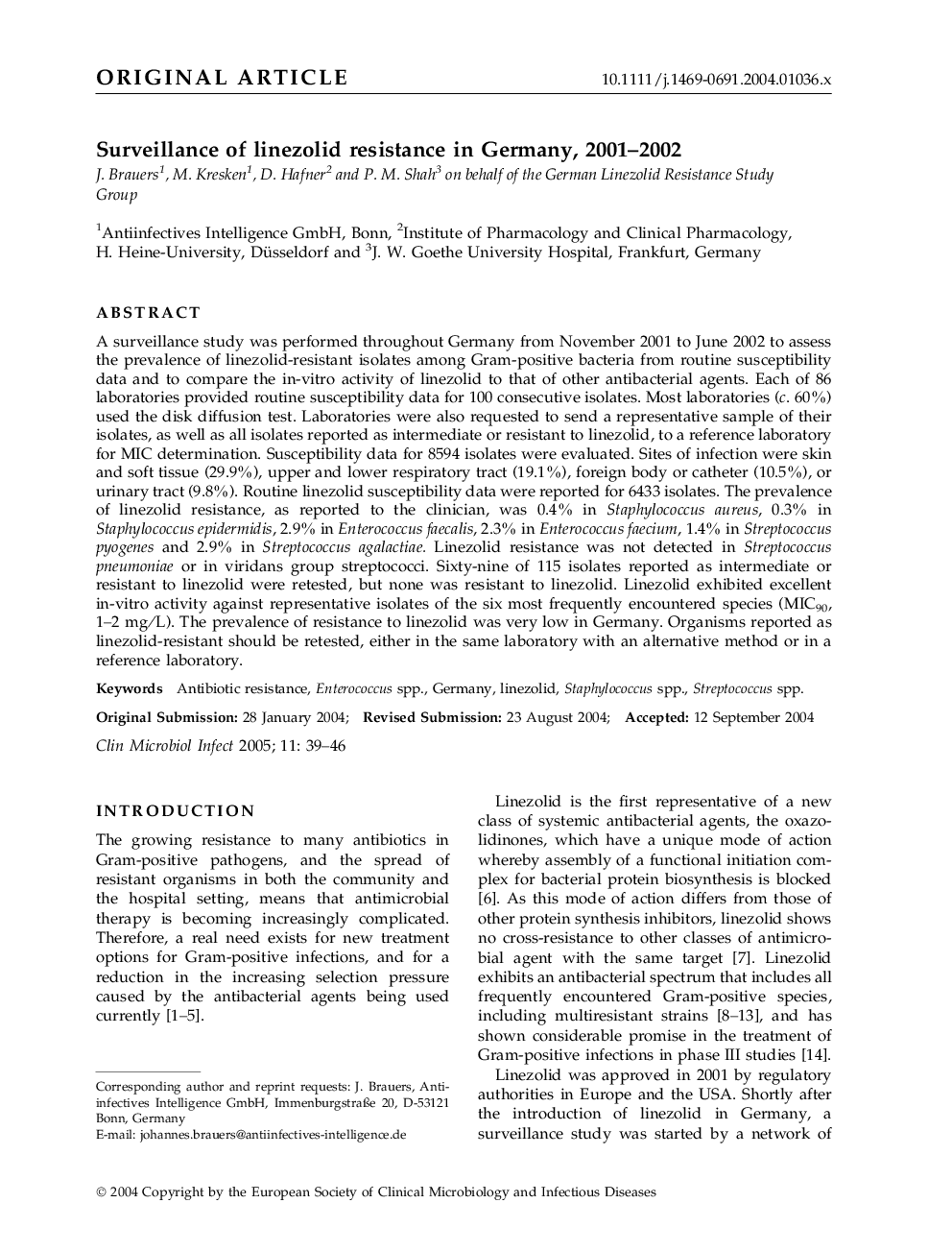| Article ID | Journal | Published Year | Pages | File Type |
|---|---|---|---|---|
| 9276037 | Clinical Microbiology and Infection | 2005 | 8 Pages |
Abstract
A surveillance study was performed throughout Germany from November 2001 to June 2002 to assess the prevalence of linezolid-resistant isolates among Gram-positive bacteria from routine susceptibility data and to compare the in-vitro activity of linezolid to that of other antibacterial agents. Each of 86 laboratories provided routine susceptibility data for 100 consecutive isolates. Most laboratories (c. 60%) used the disk diffusion test. Laboratories were also requested to send a representative sample of their isolates, as well as all isolates reported as intermediate or resistant to linezolid, to a reference laboratory for MIC determination. Susceptibility data for 8594 isolates were evaluated. Sites of infection were skin and soft tissue (29.9%), upper and lower respiratory tract (19.1%), foreign body or catheter (10.5%), or urinary tract (9.8%). Routine linezolid susceptibility data were reported for 6433 isolates. The prevalence of linezolid resistance, as reported to the clinician, was 0.4% in Staphylococcus aureus, 0.3% in Staphylococcus epidermidis, 2.9%in Enterococcus faecalis, 2.3%in Enterococcus faecium, 1.4%in Streptococcus pyogenes and 2.9% in Streptococcus agalactiae. Linezolid resistance was not detected in Streptococcus pneumoniae or in viridans group streptococci. Sixty-nine of 115 isolates reported as intermediate or resistant to linezolid were retested, but none was resistant to linezolid. Linezolid exhibited excellent in-vitro activity against representative isolates of the six most frequently encountered species (MIC90, 1-2 mg/L). The prevalence of resistance to linezolid was very low in Germany. Organisms reported as linezolid-resistant should be retested, either in the same laboratory with an alternative method or in a reference laboratory.
Keywords
Related Topics
Life Sciences
Immunology and Microbiology
Microbiology
Authors
J. Brauers, M. Kresken, D. Hafner, P.M. Shah, on behalf of the German Linezolid Resistance Study Group on behalf of the German Linezolid Resistance Study Group,
